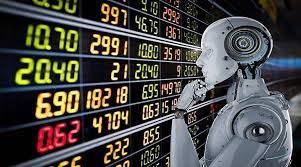The foreign exchange market, also known as forex robot or FX, is the largest and most liquid financial market in the world. It operates 24 hours a day, five days a week, and involves the buying and selling of currencies from around the globe. With a daily trading volume exceeding $6 trillion, Forex offers vast opportunities for traders to profit from fluctuations in currency prices. In this beginner’s guide, we’ll explore the basics of Forex trading and how you can get started.
What is Forex Trading?
Forex trading involves the exchange of one currency for another at an agreed-upon price. The goal is to profit from the changes in exchange rates between currency pairs. For example, if you believe the euro will strengthen against the US dollar, you would buy the EUR/USD currency pair in the hope of selling it later at a higher price.
Major Currency Pairs
In Forex trading, currencies are traded in pairs. The most commonly traded currency pairs are known as the major pairs and include:
- EUR/USD (Euro/US Dollar)
- USD/JPY (US Dollar/Japanese Yen)
- GBP/USD (British Pound/US Dollar)
- USD/CHF (US Dollar/Swiss Franc)
- AUD/USD (Australian Dollar/US Dollar)
- USD/CAD (US Dollar/Canadian Dollar)
How Does Forex Trading Work?
Forex trading is done through a network of banks, financial institutions, brokers, and individual traders. Unlike stock markets, Forex operates over-the-counter (OTC), meaning that trades are conducted directly between parties rather than on a centralized exchange.
Traders can speculate on currency prices using leverage, which allows them to control larger positions with a relatively small amount of capital. However, leverage can amplify both profits and losses, so it should be used with caution.
Factors Affecting Currency Prices
Currency prices are influenced by a variety of factors, including:
- Economic Indicators: GDP growth, employment rates, inflation, and interest rates can all impact a country’s currency value.
- Geopolitical Events: Political instability, wars, and trade disputes can affect currency prices.
- Market Sentiment: Trader perception of a currency’s value can influence its price.
- Central Bank Actions: Central banks can influence currency prices through monetary policy decisions such as interest rate changes and quantitative easing.
Getting Started in Forex Trading
To start trading Forex, you’ll need to open an account with a Forex broker. Choose a broker that is regulated and offers a user-friendly trading platform. You’ll also need to deposit funds into your trading account.
Once your account is set up, you can start trading by analyzing currency charts, placing trades, and managing your positions. It’s important to develop a trading strategy and to practice good risk management to protect your capital.
In conclusion, Forex trading offers exciting opportunities for traders to profit from the dynamic world of currency exchange. By understanding the basics of Forex trading and developing a solid trading plan, you can start your journey towards becoming a successful Forex trader.
